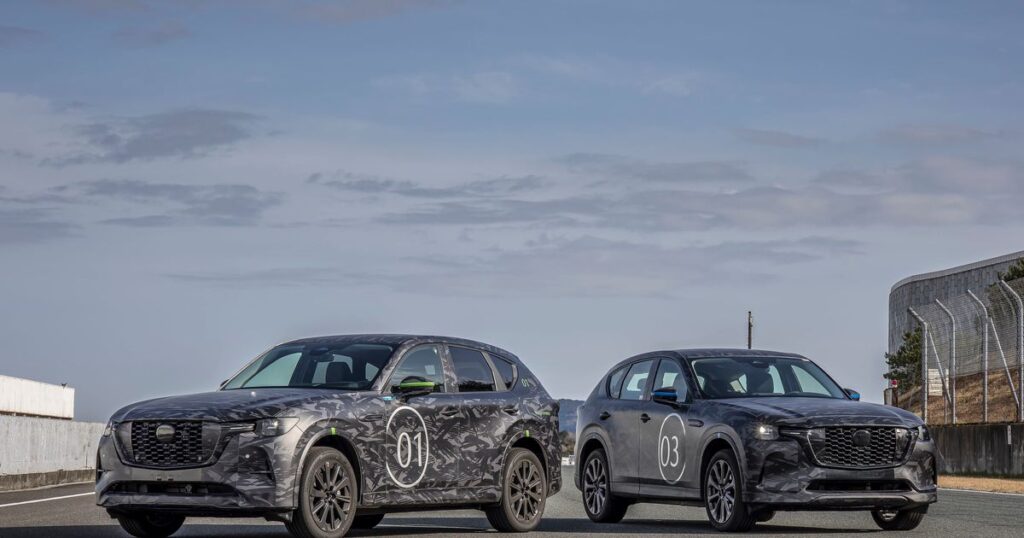The CX-60 began production last month at Mazda’s Hofu Plant No. 2 in western Japan. European deliveries will begin this summer, followed by Japan in the fall.
The crossover will be available with a variety of powertrain options, beginning with a plug-in hybrid configuration that pairs a 2.5-liter four-cylinder Skyactiv-G gasoline engine with a 17.8-kilowatt-hour lithium ion battery and a 129-kilowatt electric motor. The total system output is 241 kW, or approximately 328 horsepower.
The e-Skyactiv PHEV accelerates from zero to sixty miles per hour in 5.8 seconds and can travel approximately 62 kilometres (39 miles) in electric mode.
Meanwhile, a newly developed 3.3-liter six-cylinder e-Skyactiv D diesel engine is coupled to a 48-volt mild hybrid system that acts as an engine assist. The diesel engine produces 245 horsepower and accelerates from 0 to 62 mph in 7.3 seconds. This setup’s selling point is its beefy torque.
While those specifications apply to the European version, they are indicative of the drivetrains Mazda plans to introduce in its other large vehicles and in other markets.
The CX-70 and CX-90 are expected to be offered in the United States with an e-Skyactiv plug-in hybrid electric vehicle and a 3.3-liter inline six-cylinder turbocharged gasoline engine. The CX-90 is scheduled to arrive in the United States first, in 2023, to replace the CX-9. The CX-70 will follow shortly afterwards.
Europe is also expected to receive an inline-six variant of Mazda’s Skyactiv-X engine in the future. Meanwhile, Japan will receive non-hybrid variants of the I-6 diesel and I-4 gasoline engines.
The overall lineup is as follows:
- The CX-60 will feature two rows of seats and will be aimed at Europe and Japan.
- The CX-70 will feature two rows and a broad body and will be marketed in North America.
- The CX-80 will feature three rows, with a primary focus on Europe and Japan.
- The CX-90, which will be available in North America as well, will feature three rows and a broad body.
